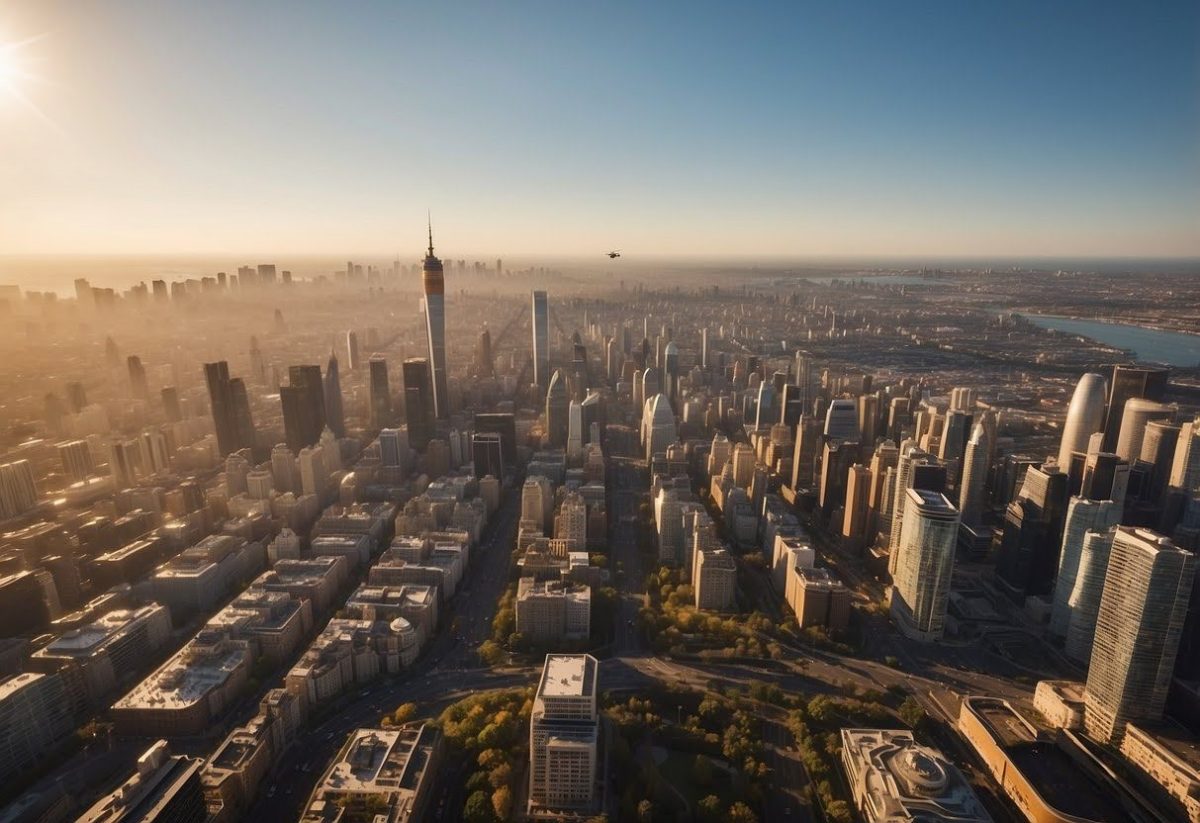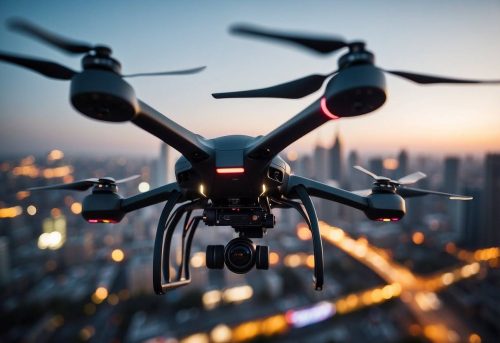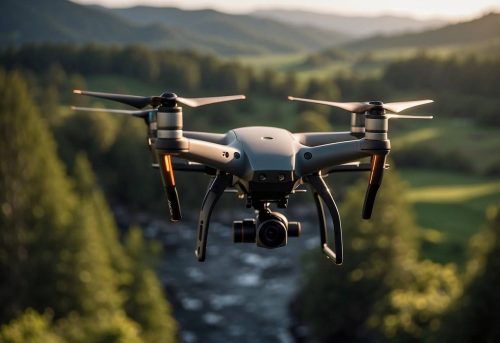Expert Survey Solutions that deliver.

Integrating filming with drones into your marketing strategies offers a transformative approach that goes beyond traditional methods. Drone footage can captivate your audience with unique aerial perspectives, showcasing your business or product from stunning angles. This not only grabs attention but also helps in driving deeper engagement with your brand. Commercial drone operations are becoming increasingly popular due to […]
Integrating filming with drones into your marketing strategies offers a transformative approach that goes beyond traditional methods. Drone footage can captivate your audience with unique aerial perspectives, showcasing your business or product from stunning angles. This not only grabs attention but also helps in driving deeper engagement with your brand.
Commercial drone operations are becoming increasingly popular due to their versatility and cost-effectiveness. You will find that using drone filming can enhance your event coverage, be it a music concert, a high-profile wedding, or a corporate gathering. This allows you to create compelling visual narratives that highlight the scale and grandeur of your events, making your marketing content more appealing.
Drone filming is a powerful tool for digital marketing. Equipped with high-quality cameras and sensors, drones can capture breathtaking visual content that is perfect for your website and social media platforms. This high-end imagery not only enhances your brand visibility but also positions your business as innovative and forward-thinking. By leveraging these advantages, you stand to gain a significant competitive edge in your industry.

Understanding the capabilities and types of modern drones is essential for leveraging their potential in marketing. Let’s break down the technological advancements and the different types of drones you may consider for filming.
Modern drones, also known as Unmanned Aerial Vehicles (UAVs), are equipped with advanced features that enhance their filming efficiency. High-resolution cameras capable of shooting up to 5K video, three-axis stabilisation gimbals, and sophisticated flight controls are standard. These features allow for capturing smooth, high-quality footage even in challenging environments.
Some modern drones include obstacle detection and avoidance systems, which means you can navigate complex scenes with ease. GPS-assisted hover and waypoint navigation enable precise control and consistent filming angles. Battery technology also plays a crucial role, with many drones offering flight times that exceed 30 minutes, ensuring you have ample time to capture the required footage.
There are several types of drones suitable for filming, each with unique features tailor-made for specific needs. Consumer drones are often lightweight and easy to operate, perfect for beginners or quick, on-the-go shoots. These drones usually offer an excellent balance between cost and capabilities, including decent camera quality and flight stabilisation.
Professional drones are designed for high-end productions. They come with superior camera systems, extended flight times, and advanced stabilisation. These are ideal if high resolution and additional features like interchangeable lens systems are essential for your project.
Cinematic drones are the top-tier choice for movie productions. Equipped with the best cameras and stabilisation technologies, they also often allow dual-operator control – one person pilots the drone, while the other manages the camera. This ensures you can capture complex shots requiring precise coordination.

When preparing for drone filming, securing necessary permissions, conducting a thorough risk assessment, and crafting a detailed flight plan with a method statement are crucial steps for ensuring flight safety and compliance.
Before any drone flight, you must secure all necessary permissions and licences. This begins with identifying and contacting the relevant authorities, such as the Civil Aviation Authority (CAA) in the UK. Depending on the specifics of your operation, you might require a General Visual Line of Sight Certificate (GVC) or a Permissions for Commercial Operations (PfCO) licence.
Additionally, consulting local councils and property owners is essential, particularly if your filming involves flying over private land. Ensure that you address all privacy concerns through a comprehensive privacy impact assessment.
A thorough risk assessment is indispensable for pre-filming preparations. Begin by identifying potential hazards related to the drone flight, including environmental factors like weather conditions and geographical obstacles.
Evaluate the presence of uninvolved persons and create safety measures to maintain a safe distance. Include an analysis of operational aspects such as battery life, communication signals, and potential interference. Always refer to your Operations Manual to ensure compliance with standard operating procedures and safety protocols.
Developing a meticulous flight plan and method statement will guide the execution of your drone filming project. The flight plan should detail the specific areas of operation, flight paths, and altitudes. It must include contingencies for emergencies and changes in weather conditions.
The method statement should outline the roles and responsibilities of each drone operator, detail the steps for setting up and conducting the flight, and specify the equipment checks necessary before take-off. Ensuring that each step is clearly defined helps maintain operational clarity and safety throughout the filming process.

To achieve operational excellence in drone filming, focusing on safety, compliance, and technical proficiency is paramount. These factors ensure the quality and legality of your operations, providing smooth, high-calibre footage.
Ensuring flight safety is crucial and involves following established aviation guidelines. The Civil Aviation Authority (CAA) mandates specific regulations to minimise risks.
Privacy concerns also play a significant role. It’s important to:
Drone pilots must master advanced control skills. This includes maintaining precise shutter speed settings to ensure clear and stable footage.
Thorough training in different filming techniques enhances video quality.
By focusing on these elements, your drone operations can achieve a standard of excellence that ensures professional-grade results, setting your work apart in a competitive field.
When working with drone footage, you need to consider both the optimisation of your visual assets and the legal landscape surrounding drone operations. Addressing these aspects ensures that your production maintains technical excellence and adheres to regulations.
Editing and Colour Grading: Start with robust editing to highlight key visuals. This includes colour grading to enhance the visual quality, making your footage more compelling.
Stabilisation and Correction: Use software tools to stabilise shaky footage and correct any lens distortions. This is particularly important for aerial shots to maintain a professional look.
Metadata Management: Properly tag your footage with metadata, such as location and time of the capture, which is invaluable during the editing process.
File Organisation: Create an organised system for storing and categorising your footage. Large raw files are easier to manage with a logical structure.
Privacy Considerations: Be aware of potential privacy infringement, especially when filming over private property. Obtaining consent is critical to avoid legal issues.
Expectation of Privacy: Public spaces generally have fewer privacy limitations, but you still need to comply with regulations regarding the filming of people without explicit consent.
Country-Specific Regulations: Familiarise yourself with the UK drone regulations, which require registering drones over 250 grams and obtaining permission from landowners for take-off and landing.
Risk of Privacy Breach: Always review your footage for any unintentional capture of private activities or details that could lead to breaches of privacy needs. Applying pixelation or blurring techniques can help mitigate these issues.
Using drones for filming can significantly enhance marketing campaigns by offering unique perspectives and innovative techniques. Here are the primary ways in which drone filming can help achieve marketing goals:
Aerial shots capture a view that ground-based cameras simply cannot. The sweeping panoramas and bird’s-eye perspectives provide a fresh and engaging way to showcase your brand.
Remote pilots can manoeuvre drones to capture high-definition aerial footage that highlights your company’s facilities, events, or products from stunning angles. This approach can create a sense of grandeur and importance around your brand.
Commercial drone filming services utilise advanced drone videography technology to ensure the footage is sharp, stable, and professional. User-generated drone footage can also be incorporated for a more authentic feel, allowing customers to become part of your brand narrative.
Drone imagery opens up new possibilities for marketing campaigns. Aerial footage can be used to create immersive virtual tours, compelling storytelling videos, and dynamic social media content.
By employing drone videography, you capture not only the visuals but also the essence of your brand through creative vision. Aerial filmmakers can design shots that are visually stunning and strategically aligned with your marketing objectives.
Additionally, drones can act as robotic ‘actors’ in advertisements, providing interaction and movement that engage audiences. These capabilities make drones an indispensable tool in the modern marketer’s arsenal.
Trust Angell Surveys for cutting-edge technology, expertise and timely delivery when it matters.